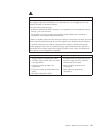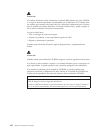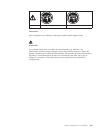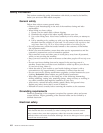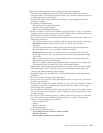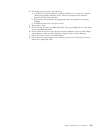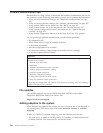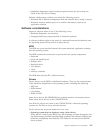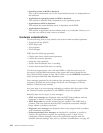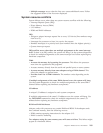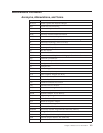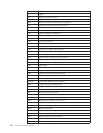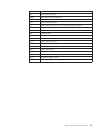v
Standalone
diagnostics
might
function
properly
because
the
device
that
was
found
is
the
only
device
running.
Software
configuration
conflicts
occur
when
the
following
are
true.
v
Hardware
has
a
different
configuration
than
the
software
that
is
using
it
expects.
v
Hardware
memory
address
space
is
in
conflict
with
memory
used
by
the
application
software.
Software
considerations
Suspect
a
software
failure
if
one
of
the
following
is
true.
v
Hardware
diagnostics
run
error-free.
v
Swapping
hardware
components
fails
to
isolate
the
problem.
A
software
problem
might
be
the
result
of
a
mismatch
between
the
hardware
and
the
operating
system
device
drivers
or
direct
drivers.
BIOS
The
BIOS
acts
as
an
interface
between
the
system
hardware,
application
software,
and
the
operating
system.
The
BIOS
contains
the
instructions
to
operate
the
basic
system
components:
v
Keyboard
v
Serial
and
parallel
ports
v
Diskette
drive
v
Hard
disk
drive
v
VGA
display
v
Clock
v
Memory
controller.
The
BIOS
then
starts
the
IPL
or
Boot
functions.
Drivers
Device
drivers
are
the
BIOS
for
additional
hardware.
They
are
the
communicators
of
the
hardware
assignments
to
the
operating
system,
including
the
following:
v
IRQ
level
v
DMA
channel
v
I/O
address
v
ROM
or
RAM.
Some
device
drivers
like
HIMEM.SYS
are
position
sensitive
and
must
be
placed
before
other
device
drivers
in
the
CONFIG.SYS
file.
Not
all
device
drivers
are
found
in
the
CONFIG.SYS
file.
Advanced
operating
systems
use
.INI
files
to
set
up
and
start
devices.
Device
drivers
can
access
the
hardware
in
five
ways.
v
Operating
system
direct
to
hardware
using
a
direct
driver
Direct
drivers,
which
bypass
BIOS,
have
the
advantage
of
faster
throughput,
but
the
disadvantage
of
limited
error-handling
capability
and
reduced
software
and
hardware
compatibility
and
flexibility.
This
method
is
not
used
in
the
IBM
PC
Series
systems.
Chapter
8.
Related
service
information
107



